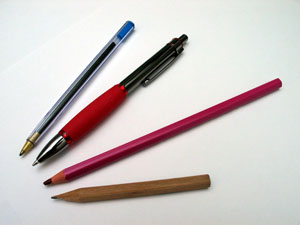Render Farm is quite popular among the new age multimedia
specialists. But if you belong to the same clan then you need to get
yourself introduced to Vray rendering services too. Basically, you can
consider it as the most preferred software of Render Farm. As you know
that rendering services work on a common network sharing platform, so
this Vray rendering application assists in the process. Thus, one thing
becomes quite clear from this short discussion; you need to install it
to help render farm execute your multimedia tasks accurately.
Now before we move further with the discussion I feel that it is important to notify you that there are a couple of upsides and downsides of Vray. Instead of putting it this way (downsides), let us remark that there are some pointers to follow prior to the installation of Vray. If you fail to execute them properly, it may not give you the exact results you might desire out of it.
· Never ever think that you can get an individual version of Vray render farm. It is a composite application that comes together with the commonly used graphic software like 3D Max and Maya. Therefore, it you are really willing to set up the application, do it simultaneous with these multimedia software.
· LAN (local area network) is crucial when you install Vray in your in-house system. Mind it; there must be a common local network that connects your computer with the remote system of the service provider as you set up the application.
· The speed of your internet connection is extremely vital during the process. Ensure that it is fast and undisrupted, or else your installed application may be corrupted.
· There isn't any room for Wi-Fi and wireless internet devices when you intend to download Vray render farm. Stick to the conventional internet connection instead.
· Launch a Vray render server on a slave system prior to the setting up of the application in your computer.
· There might not be a fixed channel for Vray installation as the path can be dissimilar for each base application on which the set up of Vray is done. But never mind; look into the Vray set up folder and you will always find something that reads 'Launch Vray DR spawner'. Click on it and use it for setting the installation process in action.
· The installation will not start at all if your operating system is Vista or Windows 7. Don't get upset as you can overcome this hurdle. You just need to get the setup privileges of the administrator of your LAN connected computer for this purpose.
Finally, after so many hurdles that greatest upside of Vray is that it is fast and easy to install, and works efficiently even for a novice!
Now before we move further with the discussion I feel that it is important to notify you that there are a couple of upsides and downsides of Vray. Instead of putting it this way (downsides), let us remark that there are some pointers to follow prior to the installation of Vray. If you fail to execute them properly, it may not give you the exact results you might desire out of it.
· Never ever think that you can get an individual version of Vray render farm. It is a composite application that comes together with the commonly used graphic software like 3D Max and Maya. Therefore, it you are really willing to set up the application, do it simultaneous with these multimedia software.
· LAN (local area network) is crucial when you install Vray in your in-house system. Mind it; there must be a common local network that connects your computer with the remote system of the service provider as you set up the application.
· The speed of your internet connection is extremely vital during the process. Ensure that it is fast and undisrupted, or else your installed application may be corrupted.
· There isn't any room for Wi-Fi and wireless internet devices when you intend to download Vray render farm. Stick to the conventional internet connection instead.
· Launch a Vray render server on a slave system prior to the setting up of the application in your computer.
· There might not be a fixed channel for Vray installation as the path can be dissimilar for each base application on which the set up of Vray is done. But never mind; look into the Vray set up folder and you will always find something that reads 'Launch Vray DR spawner'. Click on it and use it for setting the installation process in action.
· The installation will not start at all if your operating system is Vista or Windows 7. Don't get upset as you can overcome this hurdle. You just need to get the setup privileges of the administrator of your LAN connected computer for this purpose.
Finally, after so many hurdles that greatest upside of Vray is that it is fast and easy to install, and works efficiently even for a novice!







.jpg)

